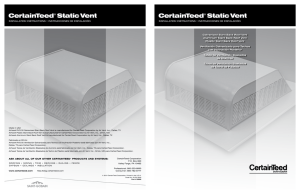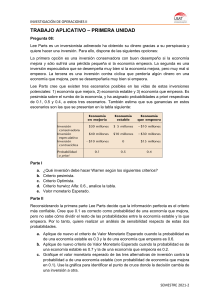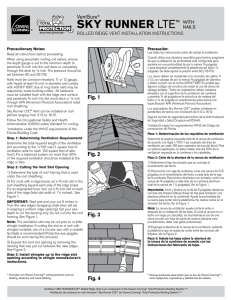ventsure® metal dome
Anuncio
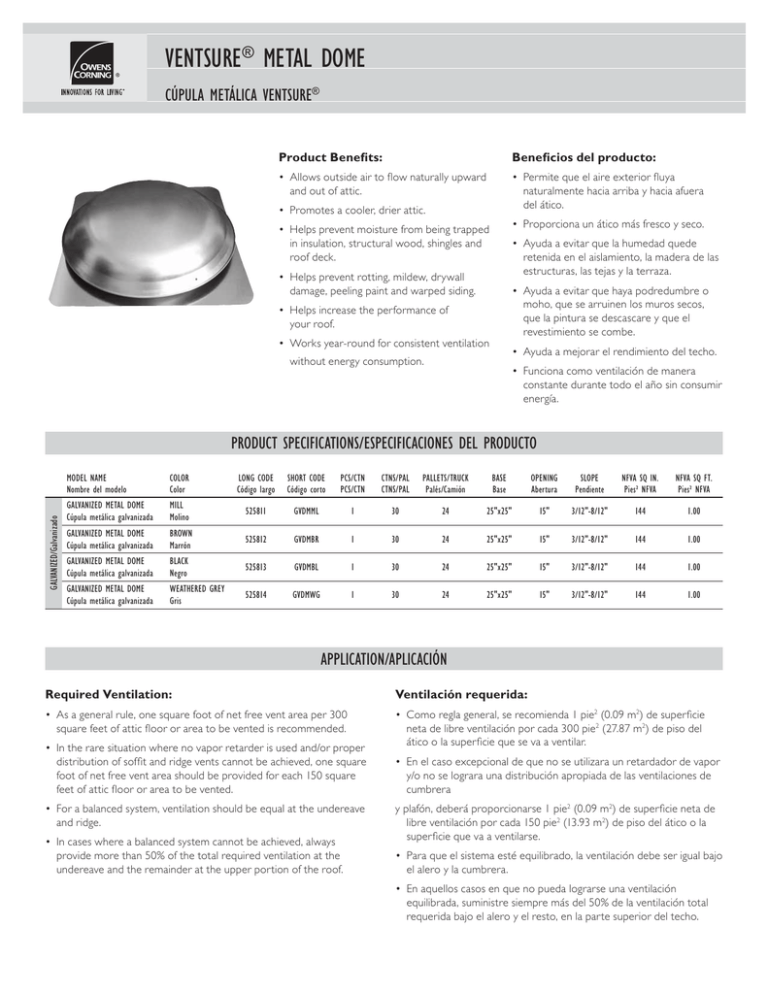
VENTSURE® METAL DOME CÚPULA METÁLICA VENTSURE® Product Benefits: Beneficios del producto: • Allows outside air to flow naturally upward and out of attic. • Permite que el aire exterior fluya naturalmente hacia arriba y hacia afuera del ático. • Promotes a cooler, drier attic. • Proporciona un ático más fresco y seco. • Helps prevent moisture from being trapped in insulation, structural wood, shingles and roof deck. • Ayuda a evitar que la humedad quede retenida en el aislamiento, la madera de las estructuras, las tejas y la terraza. • Helps prevent rotting, mildew, drywall damage, peeling paint and warped siding. • Ayuda a evitar que haya podredumbre o moho, que se arruinen los muros secos, que la pintura se descascare y que el revestimiento se combe. • Helps increase the performance of your roof. • Works year-round for consistent ventilation • Ayuda a mejorar el rendimiento del techo. without energy consumption. • Funciona como ventilación de manera constante durante todo el año sin consumir energía. GALVANIZED/Galvanizado PRODUCT SPECIFICATIONS/ESPECIFICACIONES DEL PRODUCTO MODEL NAME Nombre del modelo COLOR Color LONG CODE Código largo SHORT CODE Código corto PCS/CTN PCS/CTN CTNS/PAL CTNS/PAL PALLETS/TRUCK Palés/Camión BASE Base OPENING Abertura SLOPE Pendiente NFVA SQ IN. Pies2 NFVA NFVA SQ FT. Pies2 NFVA GALVANIZED METAL DOME Cúpula metálica galvanizada MILL Molino 525811 GVDMML 1 30 24 25"x25" 15" 3/12"-8/12" 144 1.00 GALVANIZED METAL DOME Cúpula metálica galvanizada BROWN Marrón 525812 GVDMBR 1 30 24 25"x25" 15" 3/12"-8/12" 144 1.00 GALVANIZED METAL DOME Cúpula metálica galvanizada BLACK Negro 525813 GVDMBL 1 30 24 25"x25" 15" 3/12"-8/12" 144 1.00 GALVANIZED METAL DOME Cúpula metálica galvanizada WEATHERED GREY Gris 525814 GVDMWG 1 30 24 25"x25" 15" 3/12"-8/12" 144 1.00 APPLICATION/APLICACIÓN Required Ventilation: Ventilación requerida: • As a general rule, one square foot of net free vent area per 300 square feet of attic floor or area to be vented is recommended. • Como regla general, se recomienda 1 pie2 (0.09 m2) de superficie neta de libre ventilación por cada 300 pie2 (27.87 m2) de piso del ático o la superficie que se va a ventilar. • In the rare situation where no vapor retarder is used and/or proper distribution of soffi t and ridge vents cannot be achieved, one square foot of net free vent area should be provided for each 150 square feet of attic floor or area to be vented. • For a balanced system, ventilation should be equal at the undereave and ridge. • In cases where a balanced system cannot be achieved, always provide more than 50% of the total required ventilation at the undereave and the remainder at the upper portion of the roof. • En el caso excepcional de que no se utilizara un retardador de vapor y/o no se lograra una distribución apropiada de las ventilaciones de cumbrera y plafón, deberá proporcionarse 1 pie2 (0.09 m2) de superficie neta de libre ventilación por cada 150 pie2 (13.93 m2) de piso del ático o la superficie que va a ventilarse. • Para que el sistema esté equilibrado, la ventilación debe ser igual bajo el alero y la cumbrera. • En aquellos casos en que no pueda lograrse una ventilación equilibrada, suministre siempre más del 50% de la ventilación total requerida bajo el alero y el resto, en la parte superior del techo. INSTALLATION/INSTALACIÓN 1. Place the unit on top of the roof approximately 24” from the top of the ridge. For neat installation, the low profile housing on the unit should be visible only on one side of the roof. When this position is established, locate a centerline directly between two rafters and drill a hole through the roof, from the inside. This hole will be used as a center for the following operations. 1. Coloque la unidad sobre el techo a aproximadamente 24 pulgadas de la parte superior de la cumbrera. Para obtener una instalación estética, la carcasa de bajo perfil de la unidad debe ser visible sólo en uno de los lados del techo. Cuando establece esta posición, ubique una línea central que esté exactamente entre las dos vigas y haga un agujero desde el interior del techo. Este agujero se utilizará como punto central para las siguientes operaciones. 2. Draw a circle or square on the roof (refer to chart for opening size), using the drilled hole as the center, and cut the appropriate size hole in the roof. See Figure 1. 3. With the top of the unit parallel to the ridge line, slide the flange up under the shingles. When installing over an existing roof it may be necessary to remove some additional roofing material and fasteners around the vent for it to fit snugly. See Figure 2. Use roof cement between the flange and shingles approximately ½” from the outer edge. Secure with roofing nails long enough to penetrate ¾” into the wood deck or completely through plywood sheathing with a maximum 4” space between each nail. See Figure 3. 2. Dibuje un círculo o un cuadrado en el techo (consulte la tabla que se encuentra más adelante para saber cuáles con los tamaños de la abertura), utilizando el agujero perforado como punto central y corte el agujero del tamaño adecuado en el techo. Ver la Figura 1. Vent illustrations do not necessarily reflect the individual product style. Las ilustraciones de los respiraderos no necesariamente corresponden al estilo de cada producto individual. OWENS CORNING ROOFING AND ASPHALT, LLC ONE OWENS CORNING PARKWAY TOLEDO, OHIO 43659 1-800-GET-PINK® www.roofing.owenscorning.com Pub. No. 100138-B. Printed in U.S.A. October 2009. THE PINK PANTHER™ & ©1964-2009 Metro-Goldwyn-Mayer Studios Inc. All Rights Reserved. T he color PINK is a registered trademark of O wens C orning. ©2009 Owens Corning. 3. Con la parte superior de la unidad paralela a la línea de la cumbrera, deslice el ala de manera que quede por debajo de las tejas. Al instalar sobre un techo existente, es posible que sea necesario eliminar más material y sujetadores del techo que se encuentran alrededor de la ventilación, con el fin de que la unidad quede bien colocada. Vea la Figura 2. Utilice cemento para techos entre el ala y las tejas a aproximadamente ½ pulgada del borde exterior. Ajuste con clavos para techos que sean lo suficientemente largos para penetrar ¾ pulgada la base de madera del techo o atravesar completamente la madera contrachapada con un espacio máximo de 4 pulgadas entre cada clavo. Ver la Figura 3.
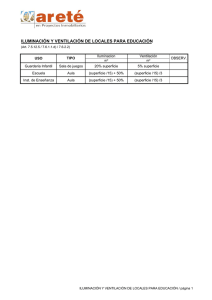
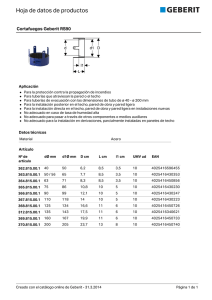
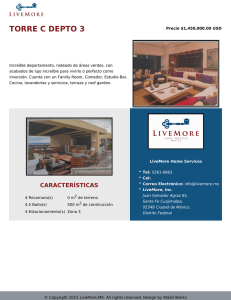
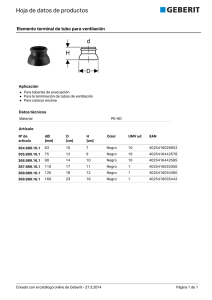
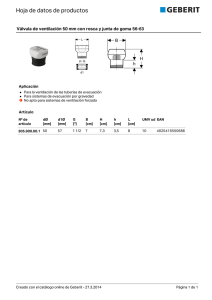
![application/msword ES Campaña por los Derechos Humanos Económicos de la Población Pobre.doc [30,50 kB]](http://s2.studylib.es/store/data/003360472_1-e96f44c111aa5e52d7d6d22e5715befa-300x300.png)
